Table of Contents
Get Custom eCommerce Fulfillment Service
Book a Meeting
7 Small Tips to Create Custom Packaging for Your eCommerce Business
Time: Jul 30,2024 Author: SFC Source: www.sendfromchina.com
In eCommerce, the first tangible interaction customers have with your brand is through your packaging. Custom packaging is a powerful tool that can enhance your brand image, improve customer loyalty, and boost your bottom line. By investing in thoughtful, well-designed packaging, you can create an unboxing experience that leaves a lasting impression.
In this guide, we'll share 7 crucial tips for creating custom packaging that aligns with your brand's vision and meets your customers' expectations. Discover how to turn your packaging into a strategic advantage for your eCommerce business.
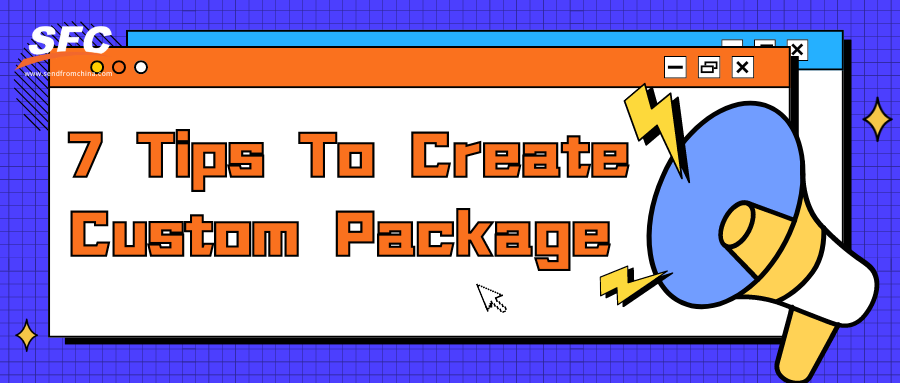
1. Understanding Custom Packaging
Custom packaging means customized packaging. It’s not about squeezing your product into a standard or common unmarked, cheap box. Instead, it’s about creating packaging that perfectly suits, fits, and protects your product while also showcasing your store’s branding.
Custom packaging is also more than just a container for your products; it’s a critical aspect of your brand’s identity and customer experience. By tailoring packaging to fit your brand’s style and the needs of your products, you create a unique presentation that can enhance brand recognition, protect your items during shipping, and delight your customers upon receipt.
2. Why You Need Custom Packaging
In the competitive world of eCommerce, custom packaging serves several essential purposes:
Brand Differentiation
In a saturated online marketplace, where products often look similar, distinctive packaging can immediately set a brand apart. It reflects the brand’s identity and values, helping to communicate its story directly to the consumer. It not only reinforces brand recognition but also makes the unboxing experience special and enjoyable, increasing the likelihood of repeat purchases and customer loyalty.
Moreover, custom packaging serves as a vital marketing tool. It allows brands to incorporate personalized touches, such as branded inserts, promotional offers, and eco-friendly materials, which resonate with their target audience. By aligning packaging with the brand’s overall aesthetics and sustainability commitments, businesses can appeal to environmentally-conscious consumers and create a consistent brand image across all customer touchpoints. The strategic use of packaging helps to build a strong, differentiated brand that stands out in the competitive e-commerce landscape.
Customer Engagement
Thoughtfully designed packaging can improve customer engagement and satisfaction, encouraging repeat purchases and positive reviews. When customers receive a package that is thoughtfully designed and tailored to reflect the brand's identity, it adds a layer of excitement and anticipation to the unboxing process. The unique experience encourages customers to interact with the brand beyond purchase, often leading them to share their excitement on social media. Such organic sharing not only extends the reach of the brand but also fosters a sense of community and connection among customers.
Product Protection
Properly designed packaging ensures that your products arrive in perfect condition, reducing the risk of damage in transit. Unlike generic packaging, custom solutions can incorporate tailored inserts, padding, and materials that provide the necessary support and cushioning to prevent damage during transit. The precise fit minimizes movement within the package, reducing the risk of breakage, scratches, or other forms of damage. By ensuring that products arrive in perfect condition, custom packaging helps maintain customer satisfaction and reduces the costs associated with returns and replacements.
Sustainability
Custom packaging allows you to choose eco-friendly materials, aligning with your brand’s commitment to sustainability and appealing to environmentally conscious consumers. Compared with generic packaging, which often uses more material than necessary, custom packaging can be designed to fit products precisely, minimizing the amount of packaging required. The reduction in excess material not only decreases the overall waste but also lessens the environmental impact associated with producing, transporting, and disposing of packaging materials. By opting for recyclable, biodegradable, or compostable materials, brands can further their commitment to sustainability and appeal to environmentally-conscious consumers.
As a salesman
When customers receive a well-designed, aesthetically pleasing package, it conveys a sense of quality and professionalism, which can enhance the overall brand image. The initial interaction sets the tone for the entire customer experience, making them more likely to view the product and brand favorably. Custom packaging can highlight key features, benefits, and unique selling points of the product, effectively communicating the brand’s value proposition in a tangible and visually appealing way.
Shares on Social Media
By creating a visually appealing and memorable unboxing experience, customers are excited to share with their followers. When a package is thoughtfully designed and aesthetically pleasing, it stands out and encourages customers to document and share their experiences on social media platforms like Instagram, Facebook, and TikTok. Unique packaging elements, such as creative designs, personalized messages, and branded touches, make the unboxing process more engaging and worthy of being shared. The organic, user-generated content not only extends the reach of the brand but also builds social proof, attracting potential new customers who see the positive experiences of others.
3. Common Types of Custom Packaging
Custom packaging comes in various forms, each suited to different products and branding strategies. Some common types include:
3.1 Corrugated boxes
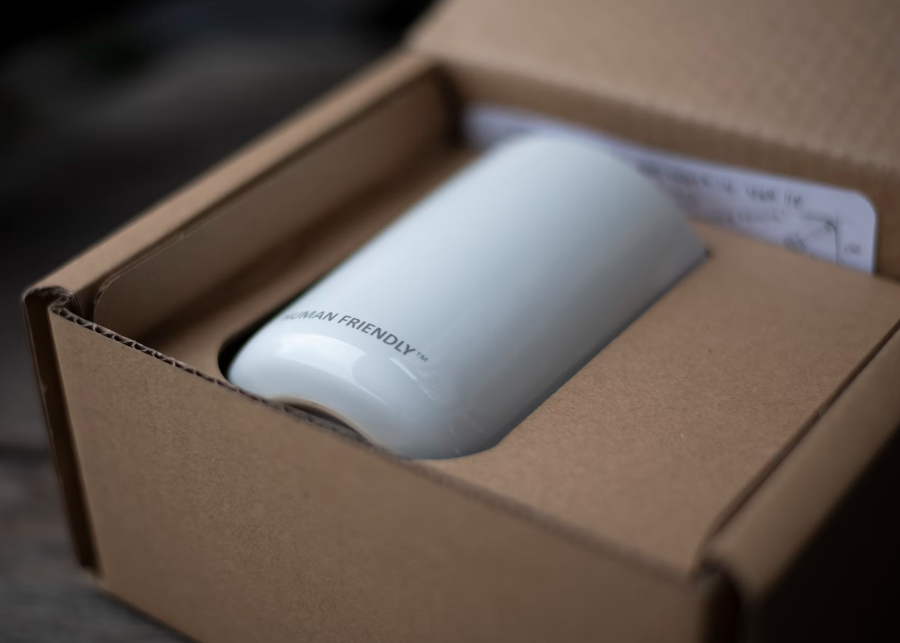
Corrugated boxes are a type of packaging made from corrugated fiberboard, which consists of a fluted corrugated sheet and one or more flat linerboards. The structure gives the boxes strength and durability, making them ideal for shipping and storage. Here are the main components and features of corrugated boxes:
Corrugated Medium (Fluting): The wavy, fluted layer that provides rigidity and cushioning.
Linerboard: The flat sheets on either side of the corrugated medium, provide strength and stability.
Single Wall, Double Wall, and Triple Wall: Refers to the number of layers of fluting and linerboard. The single wall has one fluted layer, the double wall has two, and the triple wall has three, increasing the box's strength with each additional layer.
Material: Usually made from recycled paper and kraft paper, which are durable and eco-friendly.
Customization: Corrugated boxes can be easily customized in terms of size, shape, and printing, making them versatile for various packaging needs.
Applications: Commonly used for shipping, storage, moving, and packaging a wide range of products from small items to large appliances.
3.2 Rigid boxes
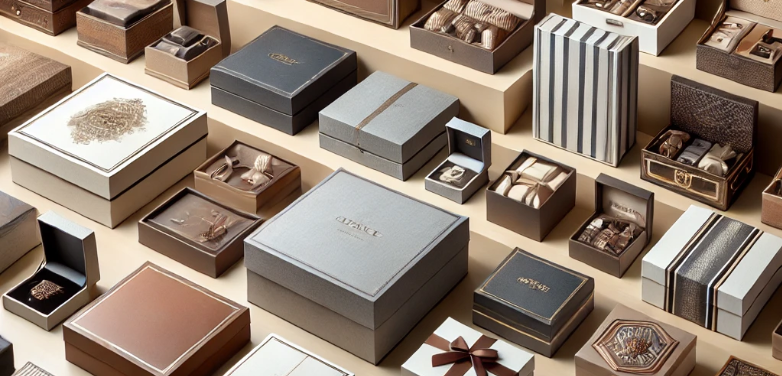
Rigid boxes, also known as setup boxes, are a type of packaging known for their sturdiness and premium appearance. Unlike corrugated boxes, which are made from a fluted corrugated sheet and linerboards, rigid boxes are made from highly durable paperboard or chipboard. Here are the key features and components of rigid boxes:
Material: Made from thick, high-quality paperboard or chipboard, providing a solid and non-collapsible structure.
Construction: Typically constructed without the need for folding, giving them a set, rigid form. They are often assembled by hand.
Appearance: Known for their luxurious and high-end look. They can be covered with various materials, such as printed or textured paper, fabric, or leather, to enhance their appearance.
Customization: Highly customizable in terms of size, shape, and design. They often feature special finishes like embossing, debossing, foil stamping, and UV coating.
Durability: Extremely durable and protective, making them ideal for high-value or delicate items.
Applications: Commonly used for luxury items such as electronics, jewelry, cosmetics, high-end fashion, and gourmet food products.
Storage: Unlike collapsible packaging options, rigid boxes maintain their shape and are not designed to be flat-packed, which can be a consideration for storage and shipping.
3.3 Paperboard boxes
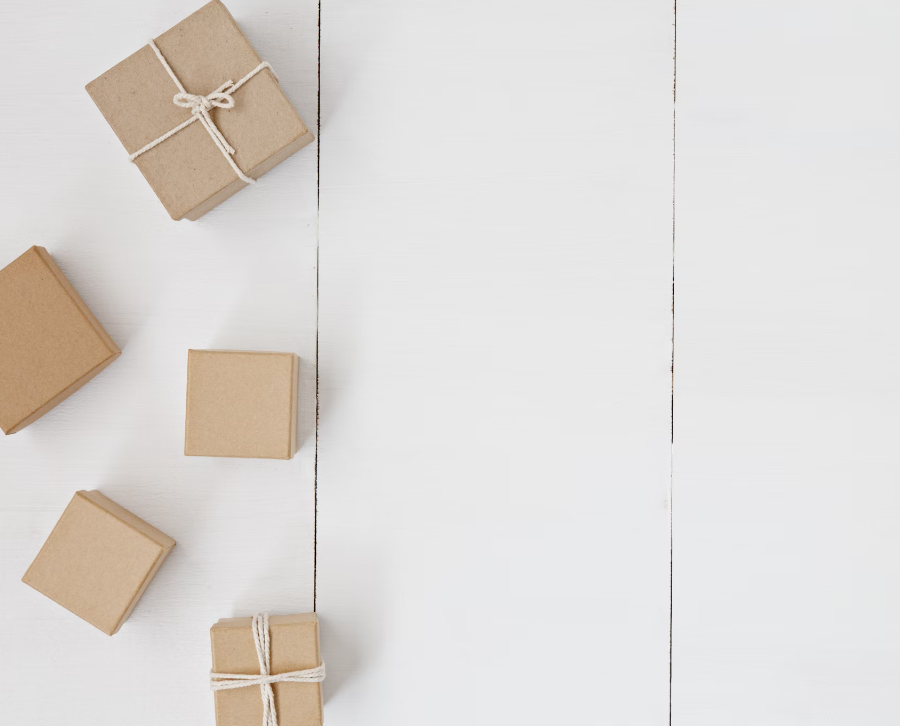
Paperboard boxes are a type of packaging made from paper-based materials that are thicker than regular paper but not as thick as corrugated fiberboard. Paperboard boxes are widely used for a variety of packaging applications due to their versatility, lightweight nature, and ease of customization. Here are the key features and components of paperboard boxes:
Material: Made from paperboard, which is a thick, paper-based material. The paperboard can be single-ply or multi-ply and is often made from recycled paper.
Construction: Can be easily cut, folded, and glued into various shapes and sizes, making them highly customizable.
Printing and Finishing: Offers excellent printability, allowing for high-quality graphics and designs. They can also feature finishes like embossing, debossing, varnishing, and laminating.
Applications: Widely used in industries such as food and beverages, cosmetics, pharmaceuticals, and consumer electronics. Common examples include cereal boxes, toothpaste boxes, and toy packaging.
Eco-friendliness: Generally considered eco-friendly because they are often made from recycled materials and are recyclable themselves.
Strength and Protection: While not as strong as corrugated boxes or rigid boxes, paperboard boxes provide sufficient protection for many products, especially lightweight and less fragile items.
3.4 Paper mailers
Paper mailers are a type of packaging designed for mailing documents, small items, and products in a secure and eco-friendly manner. Paper mailers are an alternative to plastic mailers and offer several benefits in terms of sustainability and ease of use. Here are the key features and components of paper mailers:
Material: Made from durable paper or kraft paper, which is often reinforced to provide additional strength and protection.
Construction: Typically flat and envelope-like, paper mailers can include features such as self-sealing adhesive strips, tear strips for easy opening, and padding for added protection.
Sizes: Available in various sizes to accommodate different mailing needs, from small envelopes to larger mailers for bigger items.
Eco-friendliness: Often made from recycled materials and fully recyclable, making them a sustainable choice for packaging and shipping.
Applications: Used for mailing a wide range of items, including documents, books, small electronics, clothing, accessories, and other lightweight products.
3.5 Plastic mailers
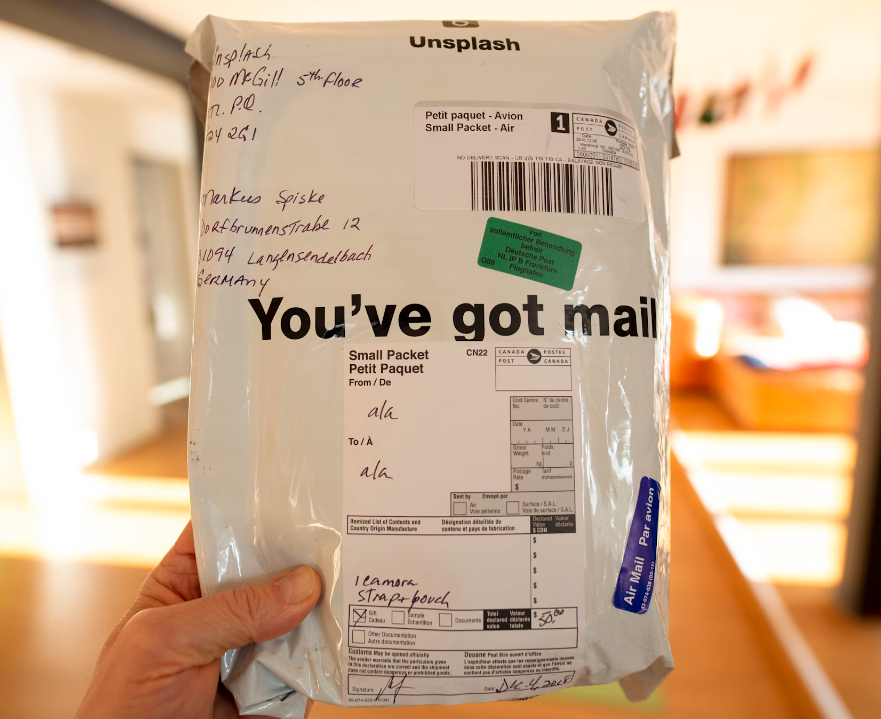
Plastic mailers are lightweight, durable packaging solutions made from plastic materials, typically used for shipping and mailing various items. They are popular in e-commerce and retail due to their affordability, flexibility, and protective qualities. Here are the key features and components of plastic mailers:
Material: Made from polyethene or other types of plastic, which provides water resistance and durability.
Construction: Thin, flexible, and usually opaque, plastic mailers are designed to protect contents from moisture, dirt, and damage in transit.
Sizes: Available in various sizes to accommodate different shipping needs, from small envelopes to larger mailers for bigger items.
Eco-friendliness: Some plastic mailers are made from recycled materials or are designed to be recyclable, although they are generally less environmentally friendly than paper mailers.
Applications: Commonly used for shipping a wide range of products, including clothing, textiles, electronics, books, and other non-fragile items.
3.6 Poly bags
Poly bags, short for polyethylene bags, are versatile and widely used plastic bags known for their flexibility, durability, and moisture resistance. Made from polyethylene (PE), they come in various forms including low-density (LDPE) and high-density (HDPE) variants, catering to different needs based on their softness, transparency, strength, and opacity. Poly bags are used across multiple industries for packaging and storing products ranging from clothing and accessories to food items, medical supplies, and industrial parts. Poly bags' construction can include simple open tops, self-sealing adhesive strips, zipper closures, heat-sealed edges, or drawstrings, making them adaptable to diverse applications.
3.7 Foil sealed bags
Foil sealed bags are packaging solutions composed of layers of aluminum foil and additional materials, offering superior protection against moisture, light, oxygen, and contaminants. Foil bags are commonly used to maintain the freshness, flavor, and quality of various products, particularly those vulnerable to environmental factors. The typical construction of foil sealed bags includes laminating aluminum foil with plastic films like polyethylene or polyester, which enhances their strength and flexibility while preserving the foil's protective properties.
3.8 Dunnage packages
Dunnage packages refer to materials and packaging solutions used to protect and secure goods during transportation and storage. The primary purpose of dunnage is to fill voids, cushion items, and prevent movement within a shipping container or packaging, thereby reducing the risk of damage. Dunnage can be made from various materials, including paper, plastic, foam, air-filled bags, wood, and metal, depending on the specific requirements of the shipment. Key types of dunnage include:
Void Fillers: Materials such as packing peanuts, air pillows, or crumpled paper used to fill empty spaces within a package to prevent shifting.
Cushioning: Foam inserts, bubble wrap, and other padding materials that absorb shock and vibrations during transit.
It was bracing and Blocking: Rigid materials like wooden blocks or plastic bracing used to secure heavy or irregularly shaped items in place.
Protective Wraps: Stretch film, shrink wrap, and other coverings that provide an additional layer of protection and stability.
4. What Else Can Be Included in Custom Packaging

Beyond primary packaging, consider adding elements that enhance the customer experience and reinforce your brand:
Branded Inserts: Include thank you notes, promotional offers, or information about your brand and products.
Tissue Paper and Wrapping: Use branded tissue paper or wrapping to create an elegant and professional look.
Custom Tape and Seals: Custom tape and seals can add a layer of security and branding to your packages.
Gift Packaging: For special occasions, offer gift packaging options that reflect the quality and thoughtfulness of your brand.
5. 7 Small Tips to Create Custom Packaging for eCommerce Business
Tip 1: Define Your Brand Identity
Your packaging should be a direct reflection of your brand’s identity. Start by clearly defining your brand’s values, mission, and aesthetic. It will guide you in every decision you make about your packaging design. Consider your target audience and what appeals to them. Use colors, fonts, and graphics that align with your brand’s voice and message.
Tip 2: Choose the Right Materials
Selecting the right materials for your packaging is crucial. Not only do they need to protect your product, but they should also align with your brand’s values. For instance, if sustainability is important to your brand, opt for eco-friendly materials such as recycled cardboard, biodegradable plastics, or compostable mailers. Make sure the materials you choose are durable enough to withstand shipping while still being cost-effective.
Tip 3: Design with the Customer in Mind
Always consider the end user when designing your packaging. The unboxing experience should be intuitive and enjoyable. Avoid excessive packaging that can frustrate customers. Instead, focus on creating a design that is easy to open, protects the product, and looks appealing. Adding small touches like a thank you note or a discount code for their next purchase can make a big difference in customer satisfaction.
Tip 4: Utilize Eco-Friendly Options
Consumers are increasingly aware of the environmental impact of packaging. By choosing eco-friendly options, you not only reduce your environmental footprint but also appeal to a growing segment of eco-conscious consumers. Highlight the sustainable aspects of your packaging on your website and in your marketing materials to attract these customers.
Tip 5: Consider the Unboxing Experience
The unboxing experience has become an important aspect of eCommerce. A well-designed unboxing experience can delight customers and encourage them to share their experiences on social media, providing free marketing for your brand. Consider elements like branded tissue paper, custom inserts, and a clean, professional look to enhance the unboxing experience.
Tip 6: Incorporate Cost-Effective Solutions
Custom packaging doesn’t have to break the bank. Look for cost-effective solutions that still provide a high level of customization. For example, you can use standard boxes with custom labels or stickers to add a personalized touch. Bulk ordering materials and working with suppliers to negotiate better rates can also help reduce costs.
Tip 7: Work with Reliable Suppliers
Choosing the right suppliers is critical to the success of your custom packaging. Look for suppliers with a track record of reliability and quality. Request samples and prototypes before committing to large orders. It’s also beneficial to work with suppliers who offer design services, as they can help bring your vision to life.
6. What You Need to Know Before Creating Custom Packaging
Before diving into the creation of custom packaging, there are a few important considerations to keep in mind:
Budget: Determine your budget for packaging and stick to it. Remember to account for all costs, including design, materials, production, and shipping.
Timeline: Custom packaging can take time to design and produce. Plan ahead to ensure you meet your deadlines.
Compliance: Ensure your packaging complies with all relevant regulations, such as labeling requirements and material restrictions.
Testing: Before committing to a large order, test your packaging to ensure it meets your needs and withstands the shipping process.
7. Get Started with SFC Services
SFC stands at the forefront of order fulfillment with cutting-edge facilities in Shenzhen, China. Utilizing sophisticated software, we specialize in seamless and trustworthy fulfillment solutions for ecommerce, dropshipping, and crowdfunding platforms. At SFC, we are dedicated to accelerating your business growth through secure warehousing, efficient processing, customizable packaging options, and adaptable shipping strategies while saving you time and money.
Whether you have or do not have a fulfillment partner, particularly your products manufactured in China, you should consider SFC. Click the button below and get help from SFC logistics experts.
What Makes SFC Special
Over 17 Years of 3PL and Order Fulfillment ExperienceAll-in-one Tracking Number
Popular Platform API Integration
30 Days of Free Storage
No Hidden Fee
Custom Packaging
Worldwide shipping solutions
Value-added Services
8. FAQs about Custom Packaging
What is the importance of custom packaging for eCommerce businesses?
Custom packaging is essential for eCommerce businesses because it enhances brand recognition, protects products during shipping, and provides a memorable unboxing experience. It helps differentiate your brand in a crowded market and can lead to increased customer loyalty and repeat purchases.
How can I make my packaging more sustainable?
To make your packaging more sustainable, opt for eco-friendly materials such as recycled cardboard, biodegradable plastics, or compostable mailers. Reduce the amount of packaging used and choose suppliers who prioritize sustainability. Highlight your commitment to sustainability in your marketing to attract eco-conscious customers.
What should I consider when designing custom packaging?
When designing custom packaging, consider your brand identity, target audience, and the unboxing experience. Choose materials that are durable and align with your brand’s values. Focus on creating a design that is visually appealing, functional, and easy to open. Incorporate elements like branded inserts and thank you notes to enhance the customer experience.
How do I choose the right packaging supplier?
To choose the right packaging supplier, look for a company with a strong reputation for quality and reliability. Request samples and prototypes to ensure they can meet your standards. Consider suppliers who offer design services and are willing to work with you to create the perfect packaging solution for your brand.
Can custom packaging be cost-effective?
Yes, custom packaging can be cost-effective. By choosing cost-effective materials, ordering in bulk, and working with reliable suppliers, you can create custom packaging that fits within your budget. Consider using standard packaging with custom labels or stickers as a more affordable option.
 Post Views:6390
Post Views:6390
Copyright statement: The copyright of this article belongs to the original author. Please indicate the source for reprinting.
Previous Post
What Is Fill Rate and How to Calculate It
Next Post
TAGS
Hot Research
Get Custom eCommerce Fulfillment Service
Book a Meeting
Get a Custom China Fulfillment Solution with FREE Storage for 30 Days
 Want to know about our services, fees or receive a custom quote?
Want to know about our services, fees or receive a custom quote?
 Please fill out the form on the right and we will get back to you within a business day.
Please fill out the form on the right and we will get back to you within a business day.
 The more information you provide, the better our initial response
will be.
The more information you provide, the better our initial response
will be.






 TAGS:
TAGS: